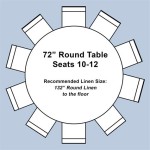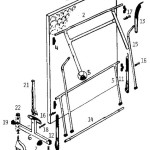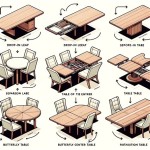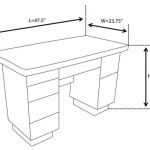Vegetable Garden Ideas & Designs: Raised Gardens
Raised garden beds offer numerous advantages over traditional in-ground gardens, making them an attractive option for gardeners of all skill levels. These elevated structures provide better drainage, improved soil quality, and easier access for planting, tending, and harvesting. They are particularly beneficial for individuals with limited mobility or those who want to avoid bending and kneeling. This article explores various ideas and designs for raised gardens, helping you create a productive and visually appealing vegetable patch.
Choosing the Right Materials
The choice of materials for your raised garden beds depends on your personal preferences, budget, and the desired aesthetic. Here are some popular options:
- Wood: Cedar, redwood, and pressure-treated lumber are excellent choices for raised garden beds due to their durability and resistance to rot. They are easy to work with and can be stained or painted for a customized look.
- Stone: Natural stone, such as flagstone or granite, provides a sturdy and long-lasting foundation. While more expensive than wood, stone beds offer timeless elegance and require minimal maintenance.
- Brick: Brick is a durable and attractive option, offering a classic look. It's easy to find bricks in various colors and patterns to complement your landscape.
- Concrete: Concrete is a very durable and cost-effective material. It can be poured into custom shapes, making it ideal for creating unique raised garden designs.
- Recycled Materials: Consider using repurposed items like old wooden pallets, tires, or even plastic containers to create budget-friendly raised beds.
Remember to factor in the size and weight of the materials when choosing a construction method. For larger, heavier beds, consider using a sturdy, long-lasting material like stone or concrete. For smaller, more portable beds, wood or recycled materials might be more practical.
Designing Your Raised Garden Beds
The design of your raised gardens should align with your space limitations, planting preferences, and aesthetic goals. Here are some factors to consider:
- Shape and Size: Raised beds can be square, rectangular, circular, or even more creative shapes. The size depends on your available space and the plants you intend to grow. Consider a width of 4 feet for easy access, and a length that fits your landscape.
- Height: The height of the beds is crucial for accessibility and soil depth. Aim for a height of 12-18 inches for optimal drainage and root growth. However, adjust the height to suit your physical limitations.
- Layout: Plan the arrangement of your beds to maximize space and accessibility. Consider grouping plants with similar needs, such as sun exposure, water requirements, and maturity rates. Leave walkways between beds for easy movement.
- Construction Techniques: Choose a construction technique that suits your skills and available resources. Simple raised beds can be built with pre-cut lumber and basic tools. More complex designs may require professional assistance or specialized tools.
Filling and Maintaining Your Raised Garden Beds
Once your raised beds are constructed, filling them with the right soil mix is crucial for healthy plant growth. Consider the following:
- Soil Mix: A high-quality soil mix should be well-draining and rich in nutrients. You can purchase pre-mixed soil specifically designed for raised beds, or create your own using compost, peat moss, and other organic materials.
- Drainage: Ensure proper drainage by adding a layer of gravel or crushed stone at the bottom of the bed. This prevents waterlogging and root rot.
- Fertilizing: Regularly fertilize your raised beds to replenish nutrients and promote plant growth. Organic fertilizers, such as compost, manure, and fish emulsion, are excellent choices for vegetable gardens.
- Watering: Proper watering is essential for healthy plant growth. Water deeply and less frequently to encourage deep root development. A drip irrigation system can be a convenient and efficient way to water your raised garden beds.
- Pest and Disease Control: Raised beds are generally less susceptible to pests and diseases, but it's important to monitor them regularly and implement preventative measures, such as companion planting and natural pest control methods.
Raised garden beds provide a wealth of benefits for both experienced and novice gardeners. With careful planning and attention to detail, you can create a productive and visually appealing vegetable garden that will provide fresh, homegrown produce for years to come.

20 Raised Bed Garden Designs And Beautiful Backyard Landscaping Ideas Vegetable Design

Flower Bed And Raised Ideas
:strip_icc()/BHG114133-0be7f169b4bb41649b474dc6baa8316f.jpg?strip=all)
The Benefits Of Raised Vegetable Gardens
:max_bytes(150000):strip_icc()/September-Garden-4-27714c582b0d4ceaad95c9c24aaac9d9-25fe181085014f4381c4323f8ff30f3f.jpg?strip=all)
31 Easy And Inexpensive Diy Raised Garden Bed Ideas

Raised Vegetable Garden Ideas Family Food Backyard Design Roof

Small Vegetable Garden Ideas Gate

8 Simple Steps To Design And Build Custom Raised Beds Worst On The Block

Vegetable Garden Layout 7 Best Design Secrets A Piece Of Rainbow

28 Best Diy Raised Bed Garden Ideas Designs In 2024 Backyard Vegetable Gardens Layout Design

18 Raised Garden Bed Ideas At All Points








